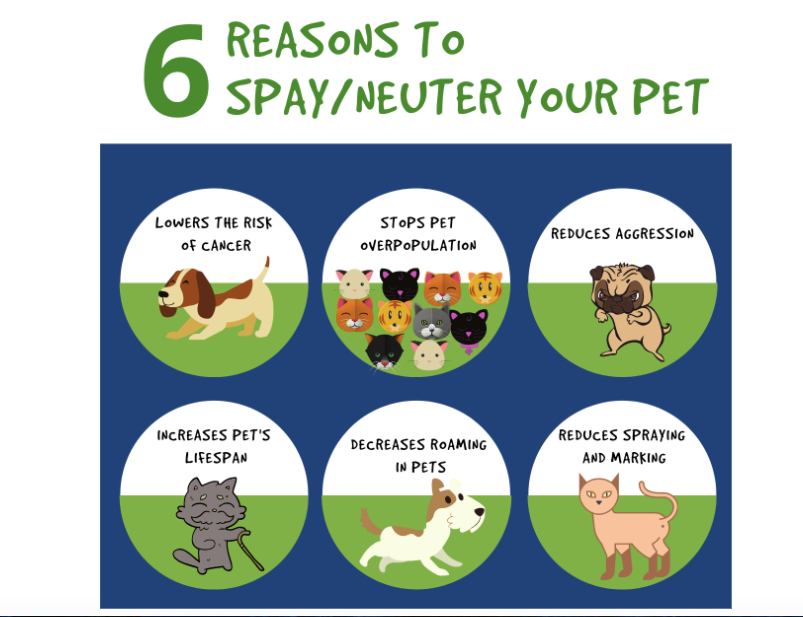Your Responsibility As A Pet Owner: Spaying/Neutering
- Kay Nagasato
- Oct 25, 2020
- 2 min read
Updated: Mar 31, 2022
As a pet owner, an important decision you may have to make is whether or not you want to spay/neuter your pet. Spaying is the removal of the ovaries and uterus of a female pet, while neutering is the removal of the testicles of your male pet. These procedures require minimal hospitalization and can offer several health benefits to your pet. But most importantly, spaying and neutering can reduce the number of homeless pets that are brought into this world.
Every year, millions of unwanted dogs or cats are euthanized according to AVMA. By taking the responsibility to sterilize your pet, you can prevent unwanted kittens and puppies from being born.

According to the ASPCA, there are several medical and behavioral benefits to spaying/neutering your pet. Studies from the University of Georgia show that the average lifespan of spayed/neutered cats and dogs is demonstrably longer than those who are not. Sterilization is considered to be a low risk procedure, and anesthesia prevents your pet from feeling any discomfort. Spaying a female pet can prevent uterine infections and breast tumors, which are fatal in 50% of dogs and 90% of cats, and neutering a male pet prevents testicular cancer and prostate problems. On top of that, spaying and neutering can prevent your female pet from going into heat, which is the stage in a female’s reproductive cycle in which she becomes receptive to mating with males. Going into heat may cause female dogs/cats to yowl and urinate frequently. Males that are not neutered also urinate frequently, mount other dogs, people, and objects, and are likely to roam away from home in search for a female partner. Spaying or neutering your pet will prevent these issues, and you will not have to worry about an unexpected litter of puppies arriving into your home.
In dogs, the traditional age for spaying/neutering is six to nine months old, but they can be neutered at as young as eight weeks old. Kittens as young as eight weeks old can safely be spayed/neutered. Spaying your female pet before their first heat (usually before they turn five months old) will offer the best protection from diseases.
Many people believe that sterilization is inhumane, and see it as a violation to an animal’s body. This is completely understandable, and I too believe that spaying/neutering would not be necessary if pet owners were more responsible for their animals. If you do not believe in spaying or neutering, you may choose to opt out of the surgery. In this case, please take extreme caution with the animals that your pets come into contact with, especially when in public, and educate yourself about the reproductive cycles in your pets.
Citations
“Dog in Heat.” n.d. Accessed October 18, 2020. https://pets.webmd.com/dogs/how-tell-if-dogs-heat.
“Spay/Neuter.” n.d. Accessed October 18, 2020. https://www.hawaiianhumane.org/spayneuter/.
“Spay/Neuter Your Pet.” n.d. Accessed October 18, 2020. https://www.aspca.org/pet-care/general-pet-care/spayneuter-your-pet.
“Spaying and Neutering.” n.d. Accessed October 18, 2020. https://www.avma.org/resources/pet-owners/petcare/spaying-and-neutering.
“Why You Should Spay/Neuter Your Pet.” n.d. Accessed October 18, 2020.
https://www.humanesociety.org/resources/why-you-should-spayneuter-your-pet.
%20copy.png)



Comments